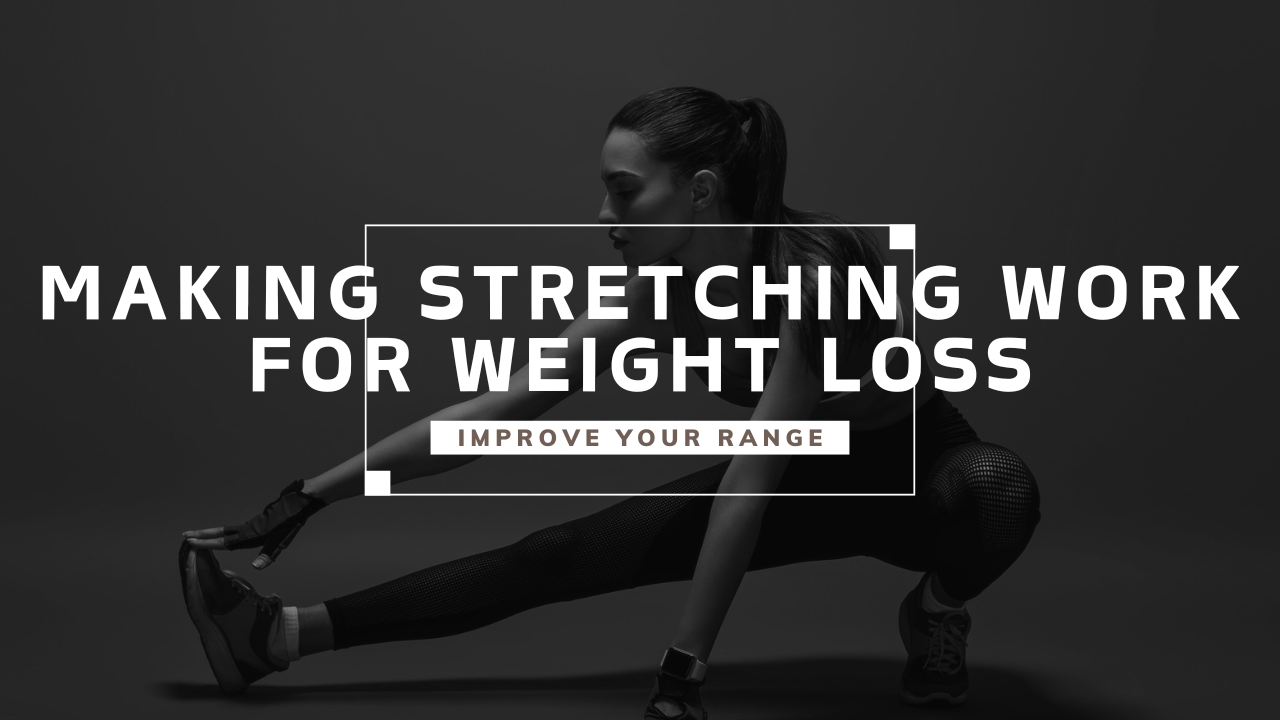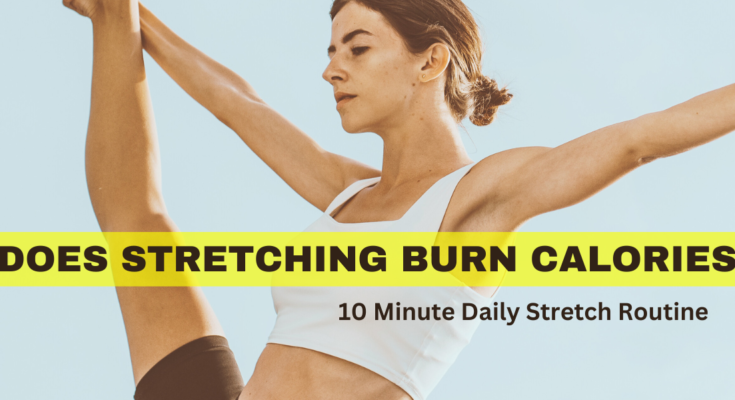Does Stretching Burn Calories? When people think about burning calories, they picture running, cycling, or hitting the weights. Stretching doesn’t usually make the list. But stretching does require energy, and energy spent equals calories burned. The real question is: How much? And is it enough to matter?
You might not think of stretching and calorie burning simultaneously, but stretching does help in the maintenance of fitness to some extent. Discover how stretching affects calorie burning and its place in your fitness journey.
The Calorie-Burning Truth
Yes, stretching burns calories, but not as much as high-intensity exercise. The body uses energy for every movement, even something as simple as reaching for your toes. On average, a person weighing around 150 pounds burns about 2.5 calories per minute of stretching. That’s roughly 75 calories for half an hour of consistent stretching.
Does stretching burn calories? For perspective:
– Walking at a brisk pace burns about 150–200 calories in 30 minutes.
– Jogging can burn 300–400 calories in 30 minutes.
– A 150-pound person burns about 85 calories while stretching for 30 minutes.
– A 125-pound person burns about 70 calories.
– A 200-pound person can burn up to 113 calories.
So while stretching isn’t in the same league as cardio or strength training, it does contribute modestly to daily calorie expenditure.
Benefits Beyond Calorie Burning
While the calorie burn may be modest, stretching offers several benefits that support weight management:
- High flexibility and work performance
- – Increases range of motion.
- – Makes other exercises more effective.
- – Reduces the risk of injury during exercise.
- 2. Stress Reduction and Comeback
- – Helps reduce muscle tension.
- – Improves circulation.
- – Supports rapid recovery from exercise.
These benefits may indirectly support weight management by keeping you active and making higher-intensity workouts more sustainable.
Visit this site: Does stretching burn calories?
Types of Stretching
Different stretching techniques offer non-identical benefits:
1. Static Stretching (SS): (holding a position, like touching your toes): Burns the fewest calories since it’s low effort.
– Involves holding positions for 15-60 seconds.
– Great for improving flexibility.
-This is perfect for use after working out.
2. Dynamic Stretching (DS): (controlled movements like leg swings or torso twists): Burns slightly more because it engages multiple muscle groups.
– Active movements are included.
– Better to prepare before exercise.
– Burns slightly more calories than static stretching.
3. PNF Stretching
– Advanced technique combining contraction and relaxation.
– Very suitable to be used when training and promoting both flexibility and strength.
4. Yoga or active mobility work:
These blur the line between stretching and exercise. Depending on intensity, yoga can burn anywhere from 150–400 calories per hour.

Making Stretching Work for Weight Loss
If your sole goal is to burn calories, stretching won’t make a significant difference. However, if your goal is to achieve a stronger, more resilient body, then stretching is essential. Think of it as a partner to your calorie-burning workouts, not a replacement.
Stretching helps you recover faster, move more efficiently, and reduce the risk of injuries that could sideline your progress. And since every calorie counts, the small burn from stretching still contributes to your overall daily total.
If stretching isn’t part of your fitness routine yet, it’s time to reconsider. Although you may not burn an awful lot of calories during stretching sets, adding it to your regular exercise Adding to the program can make a significant difference over time. The more flexible your body becomes High-intensity exercise, as easy as running or engaging in strength training, are known to burn more calories.
Stretching, in particular, is a form of stretching that improves your range of motion, reduces stiffness, It helps to energize your body. Or is not just about flexibility; It’s about increasing overall patterns of movement, reducing pain, and living a healthy life. When your body moves more freely, you can stay active longer. Which directly supports your preacher reduction goals.
While active stretching in and of itself will not cause near depletion of muscle mass it is an effective component of a gym or some fitness regimen. Here’s why:
– Improves overall exercise performance.
– Increases muscle recovery.
– Expands the angle of movement for an enhanced exercise.
– Supports the cut of stress, which can help prevent the increase in absolute values from stress.
The form of stretching exercise known as yoga is good for lowering the rate at which calories are burned. Like Vinyasa and Power Yoga, some styles are different like yoga styles involve dynamic flexible along with muscle strengthening and flexibility exercises that are capable of suggesting complete body training and also help in a faster pulse rate.
If you are practicing Vinyasa Yoga, you are able to use up between 150 and 250 calories in 30 minutes of class depending on the level of intensity and your body mass.
Stretching vs. Other Calorie-Burning Exercises
Although stretching is beneficial for creating more flexible muscles and is part of a balanced program it has to be pointed out that being elastic will use fewer calories than say aerobics. For example:
- Running: A moderate 30-minute run can burn between 300-400 calories.
- Cycling: You consume 200-300 calories of energy when cycling at a moderate intensity for 30 minutes.
- Strength Training: Weightlifting falls in moderate to high-intensity exercising and gives you 180-300 calories in 30 minutes.
So, if your main goal is to lose weight quickly, you’ll want to focus on these higher-intensity activities. However, flexible warm-ups must not be shut out as they improve these exercises by reducing the likelihood and duration of an injury.
Conclusion:
So, Does stretching burn calories? Yes, but it’s not going to burn a significant amount when compared to higher-intensity exercises. Stretching also continues to be an efficient method of increasing your flexibility, enhancing the recovery time, and your conditioning.
Nevertheless, if you are going to employ stretching to lose that weight and burn a lot of calories, then it should be backed up with cardio and strength conditioning exercises. However, stretching shouldn’t be left out of any fitness regimen, as it generally improves your mobility and speeds up your recovery; it can also help you do better in your more demanding workouts.
If you’re serious about burning calories, make sure you balance your stretching routine with these activities. Play a role in various muscle groups that increase your pulse rate.
If you are on your weight loss journey you can read this 2100 Calorie Meal Plan l An Effective Guide and also visit our site: caloriehive




